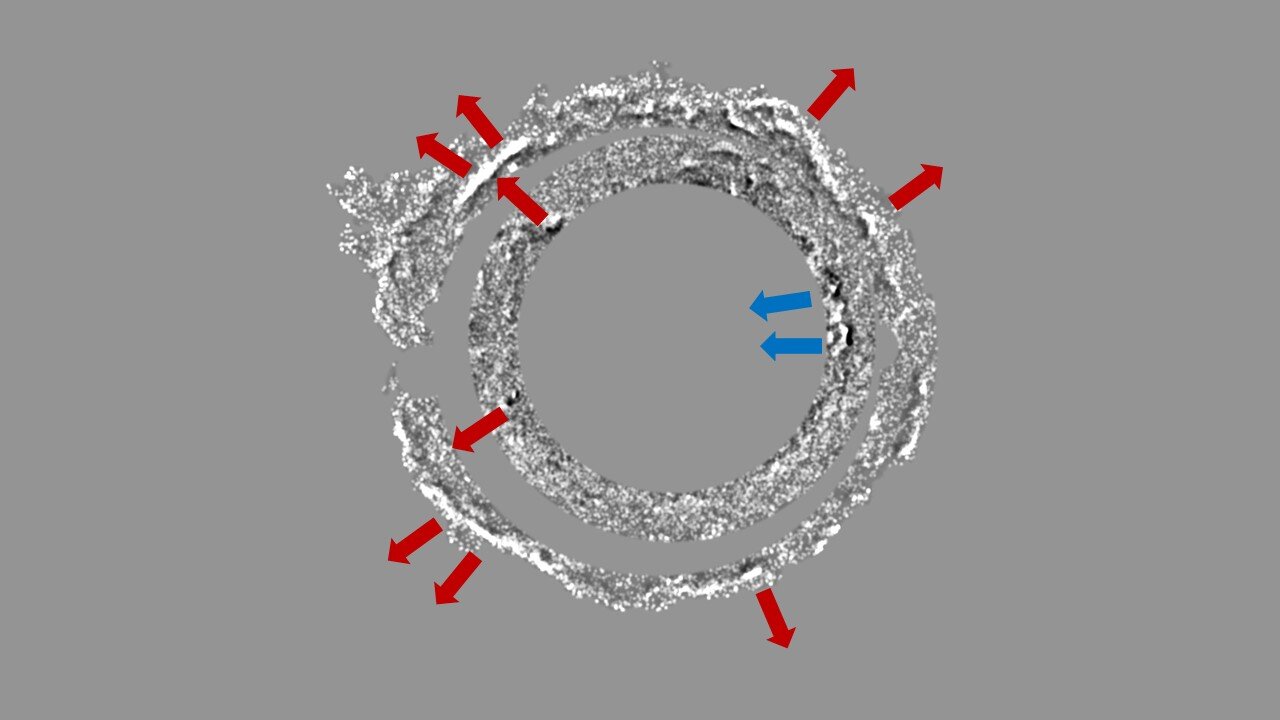Scientists have noticed that there are inner regions of the nebula on the western side of Cassiopeia A, and for some reason they are not
 The red arrows show a typical movement, and the blue arrows show a new, recently recorded movement
The red arrows show a typical movement, and the blue arrows show a new, recently recorded movement
Moving backwards could mean two things : either there's a black hole somewhere, a kind of vacuum, or the nebula has collided with something.
Jakko Vink, researchers from the University of Amsterdam, The Netherlands
Cassiopeia A is the remnant of an exploding star in the constellation Cassiopeia.It is located 11,000 light-years fromUs.Svetoththe explosion was to reach Earth for the first time around 1670.But there was too much gas and dust around the star for the explosion to be visible with the naked eye or with the simplest ofmomenttelescopes.
The Cassiopeia A Nebula is expanding from an averagespeed from 4,000 to 6,000 km/s. Its temperature is about 30 million °C. The expansion most likely takes place in gas that was ejected by the star long before the explosion. Cassiopeia A is now about 16 light-years across.
Astronomers observe the unusual movement of the nebula.The authors of the new work said that this happened after the shock wave collided with a shell of gas particles. This shell probably formed when an unexploded star swept away all the gas streams. This happened during the explosion of a star in the constellation Cassiopeia.
Researchers continue to study this phenomenon to find out exactly what caused the nebula to behave this way.
Read more:
The “fifth element” exists: a new experiment will confirm that information is material
Creepy sounds and mysterious creatures: the strangest finds in the Mariana Trench
Look at the best picture of the Sun: it consists of 83 million pixels